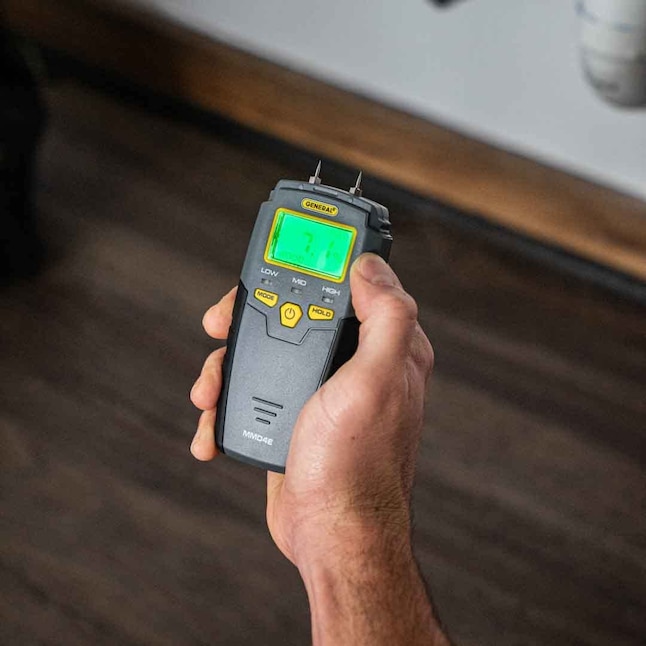Why Every House Owner Needs a Moisture Meter: Trick Benefits and Features
Why Every House Owner Needs a Moisture Meter: Trick Benefits and Features
Blog Article
Recognizing the Importance of a Moisture Meter in Avoiding Mold and Water Damages in Your Home
In the realm of home upkeep, the presence of dampness can typically be a silent yet awesome enemy, efficient in creating pervasive mold and mildew growth and perilous water damage if left uncontrolled. In the middle of the relaxing atmosphere of a residence, concealed wetness concerns can brew under the surface, presenting a risk to both residential property and wellness. Furnished with the right tools and understanding, home owners can proactively deal with these possible hazards. Comprehending the value of a moisture meter in this battle is not simply an alternative but a calculated need.
Relevance of Moisture Discovery
Efficient moisture detection methods are important for guarding homes and protecting against possible mold and mildew development and water damages. Wetness can leak right into different structure materials, causing architectural issues and carcinogen. By utilizing a moisture meter, property owners can proactively identify areas prone to excess moisture, enabling timely intervention and mitigation strategies.
Moisture meters provide exact analyses of wetness levels in different products such as concrete, drywall, and wood. This data aids in identifying areas of concern, also in hard-to-reach or surprise areas. Early detection of moisture build-up enables punctual fixings or modifications to avoid further damages.

How Moisture Meters Job
Wetness meters play a pivotal duty in the aggressive identification of excess dampness, aiding in the avoidance of possible mold growth and water damages by supplying accurate analyses of moisture degrees in various structure products. These gadgets function based upon different concepts, depending upon their kind. Moisture Meter. Pin-type moisture meters, for example, have two pins that pass through the material to gauge the electrical resistance in between them. When moisture is existing, it enhances the product's conductivity, resulting in a reduced resistance reading. Pinless dampness meters, on the other hand, usage electromagnetic sensing units to scan the product without triggering damages. These sensing units release electromagnetic signals that penetrate the product and measure the dielectric residential properties, indicating dampness material. Some progressed moisture meters pin both combine and pinless modern technologies for comprehensive wetness discovery. Understanding exactly how moisture meters feature is essential for exact and prompt wetness degree analyses, enabling efficient safety nets against mold and water damage.
Finding Early Indication
Upon preliminary inspection of a residential property, recognizing refined indicators of excess dampness becomes critical in the very early detection of prospective mold and mildew development and water damage. Water stains can indicate leaks or seepage, while peeling paint or wallpaper might be an outcome of moisture jeopardizing the attachment of these materials to the surface. In addition, an increase in allergic reaction signs and symptoms or respiratory problems amongst passengers might recommend the existence of mold due to excess moisture.
Protecting Against Mold And Mildew Development
Identifying very early warning indications of excess moisture within a home not only enables prompt discovery of possible mold growth and water damages but additionally acts as a positive step in avoiding the proliferation of mold and mildew. To efficiently avoid mold development, it is vital to deal with any you can try here resources of wetness promptly. This can consist of repairing leaks in home windows, roofings, or pipelines, making sure correct ventilation in wet areas like restrooms and cooking areas, and utilizing dehumidifiers in high-humidity spaces. Frequently keeping the building and examining's pipes, roofing, and gutters can additionally help in protecting against water invasion that might bring about mold growth.
Along with attending to moisture resources, maintaining interior moisture degrees listed below 60% can significantly inhibit mold growth. Correct air flow, adequate insulation, and using ac unit or fans can help control indoor humidity degrees. Keeping track of dampness degrees in locations vulnerable to wetness, such as cellars and creep rooms, making use of a dampness meter can additionally assist in very early discovery of raised wetness levels and potential mold and mildew growth. By taking proactive steps to stop excess wetness and mold growth, house owners can secure their property and interior air high quality.
Benefits of Routine Surveillance
Routine tracking of wetness degrees in a property can play a crucial function in preserving a healthy indoor environment and protecting against potential mold and water damages. By frequently checking moisture levels, homeowners can detect any issues quickly and take needed activities to prevent mold and mildew development and water damages.
Moreover, routine tracking allows property owners to track patterns and patterns in wetness levels in time. By establishing a baseline and monitoring find out here adjustments, people can identify any locations of problem or possible vulnerabilities in the property's framework. This data-driven strategy allows targeted interventions and upkeep initiatives to attend to underlying problems before they rise into even more substantial issues. Ultimately, the regular monitoring of moisture degrees empowers homeowners to shield their residential or commercial property, protect their health, and maintain the stability of their indoor environment.

Conclusion

By utilizing a moisture meter, property owners can proactively identify areas prone to excess moisture, allowing for prompt i loved this intervention and reduction methods.

Keeping an eye on dampness degrees in locations susceptible to moisture, such as basements and crawl areas, utilizing a wetness meter can likewise help in early detection of elevated wetness levels and prospective mold and mildew growth. (Moisture Meter)
Report this page